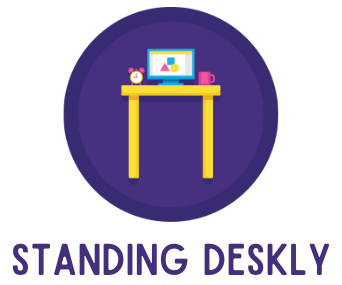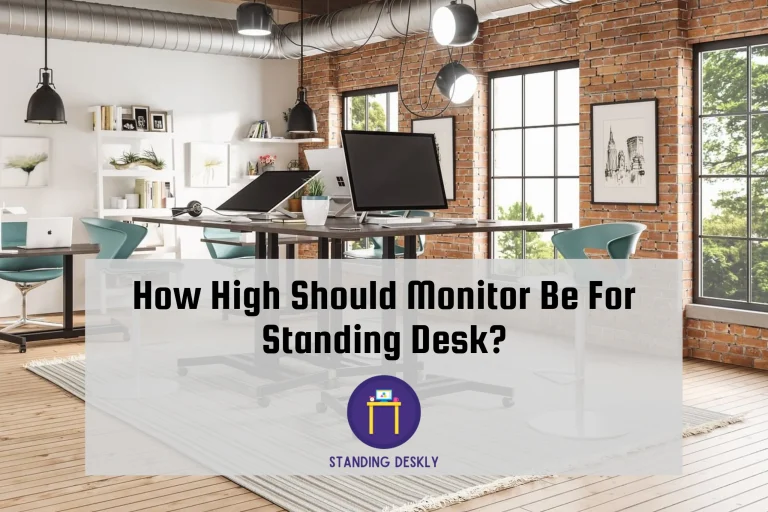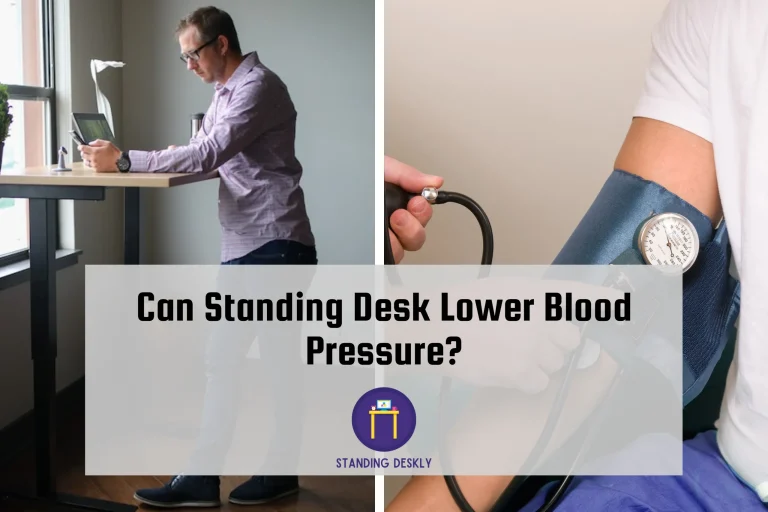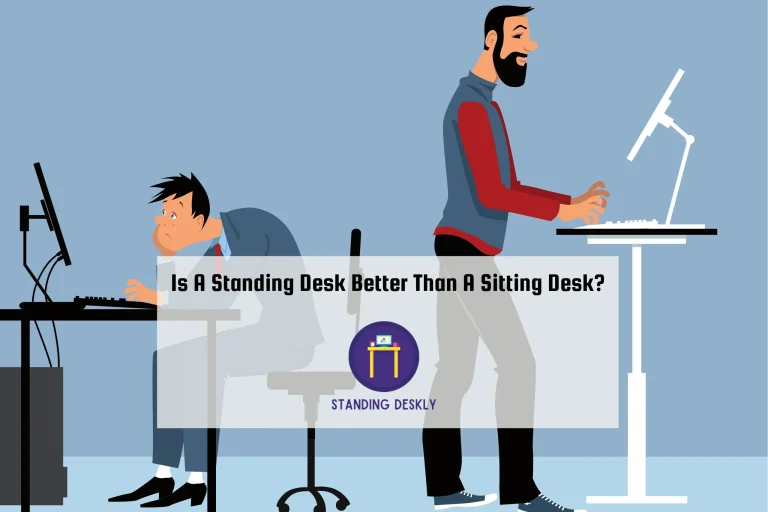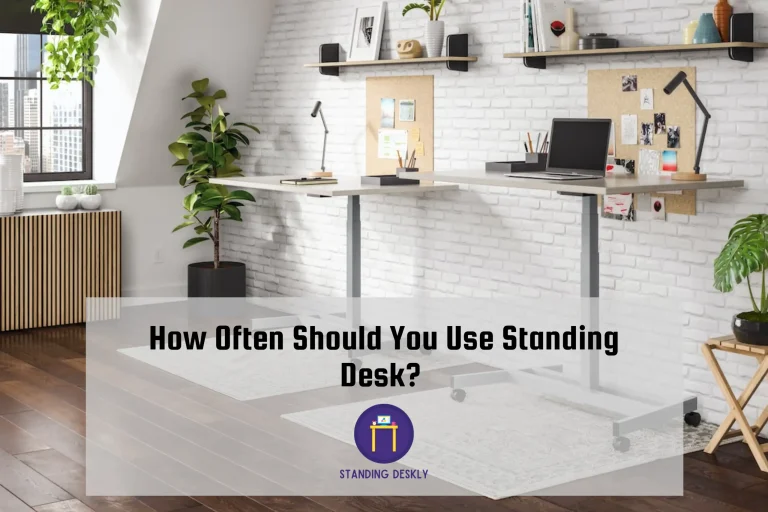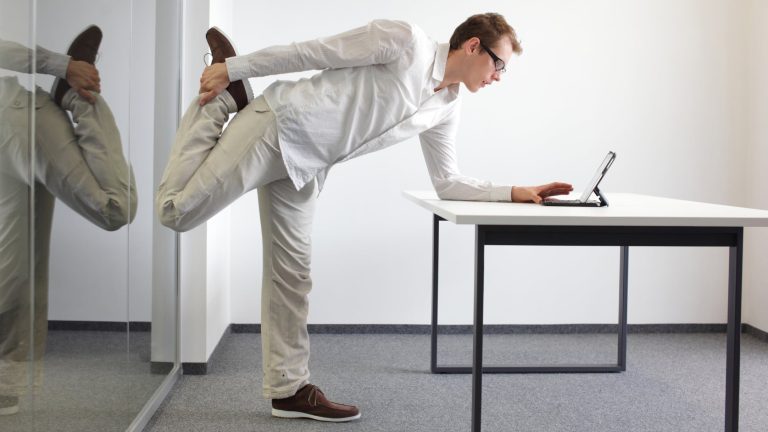Do Standing Desks Help Lower Back Pain?
Back pain is one of the most common complaints among office workers. Many people try various solutions to alleviate their discomfort, including ergonomic chairs and cushions, but few consider the benefits of standing desks.
Studies show that working while standing can decrease lower back pain by improving posture and relieving pressure on the spine. When we sit for long hours, we tend to slouch or hunch over our desk, which places additional strain on our lower back muscles and spinal discs. On the other hand, standing encourages us to maintain an upright posture by engaging our core muscles and aligning our spine correctly.
Introduction to standing desks and lower back pain
If you suffer from lower back pain, you might wonder if a standing desk could ease your discomfort. It’s true that studies have shown that using a standing desk can reduce lower back pain by up to 32%. However, it’s important to understand that a standing desk is not a cure-all for lower back pain. At best, it can be a helpful tool in reducing discomfort. In this blog, we’ll explore the reported benefits of using standing desks for lower back pain, along with the limitations of this approach. We’ll also discuss the importance of correct posture and movement while using a standing desk to maximize the benefits and minimize any potential issues. Let’s get started.
The reported benefits of using standing desks for lower back pain
Using standing desks for lower back pain has several reported benefits. Research has shown that standing, rather than sitting, can reduce the risk of shoulder and back pain. Additionally, a study found that participants experienced a 32% reduction in lower back pain after using a standing desk for several weeks. It’s important to note that standing for long periods may not cure all lower back pain as it puts pressure on muscles and joints. It’s recommended that you use your standing desk correctly, take regular breaks, and practice good posture and movement to reduce tension and aching muscles. Overall, standing desks have the potential to improve your posture, reduce back pain associated with sitting too much, and improve your overall health.
The limitations of standing desks as a cure for lower back pain
Although standing desks can offer relief for lower back pain sufferers, it’s crucial to acknowledge that they are not a remedy for the condition. As discussed in the previous sections, standing desks can improve posture, reduce stress on the lower spine, and increase movement throughout the day. However, it is important to remember that standing for extended periods of time can also lead to discomfort and muscle fatigue. Additionally, standing desks do not address underlying causes of lower back pain such as muscle imbalances, herniated discs, or other spinal conditions. Although standing desks are useful for reducing lower back pain, it’s important to seek professional advice to address the underlying problem.
Standing desks and its impact on lower back pain
Using a standing desk can have a positive impact on your lower back pain. Studies have shown that standing at work can improve your posture and relieve pressure from your lower spine. This promotes healthy circulation, increases alertness, and eases back pain. Additionally, sitting for extended periods of time can impose significant strain on your lower back. By standing, you force yourself to improve your posture which in turn reduces the pressure on your lower back. However, it’s important to note that standing desks are not a cure-all for lower back pain. Maintaining a healthy back while using a standing desk includes practicing proper posture and movement, along with taking regular breaks and stretching. Using a standing desk can ease lower back pain, but it is crucial to use it properly with good posture and movement habits.
Other potential health benefits of using standing desks
In addition to reducing back pain and improving posture, using a standing desk can offer a range of other health benefits. Standing while working can help increase energy levels, improve focus and productivity, and even burn more calories than sitting. Studies have also shown that standing desks can help to reduce the risk of obesity, diabetes, and cardiovascular disease. Switching to a standing desk can be a simple but effective way to make a positive impact on your overall health and wellbeing. Remember that standing for long periods can be tough on your body. So, take regular breaks, stretch, and move around during the day to avoid muscle strain and fatigue.
Importance of correct posture and movement while using a standing desk
Proper posture and movement are essential when using standing desks to alleviate lower back pain. While standing desks can provide numerous benefits, poor posture and lack of movement can lead to muscle strain and discomfort over time. To use a standing desk properly, maintain a neutral spinal position, relax your shoulders, engage your core, and plant your feet firmly. Additionally, taking breaks to stretch and move around can help prevent fatigue and stiffness. By practicing proper posture and incorporating movement into your standing desk routine, you can maximize the benefits for your lower back pain and overall health.
Standing desks as a tool for maintaining correct spinal curves and reducing back pain.
Standing desks can be a valuable tool in maintaining correct spinal curves and reducing back pain. When used correctly, standing desks can encourage good posture and reduce the pressure on your neck and lower back. By alternating between standing and sitting throughout the day, you can break up prolonged periods of inactivity that can lead to back pain. It’s important to adjust your desk to the correct height and position to ensure that you’re not straining your neck or back. Remember to take breaks to stretch and move around to help prevent discomfort. Although standing desks are not a panacea for chronic back pain, they can contribute to alleviating pain and improving health.
Conclusion
In conclusion, the use of standing desks can be beneficial for reducing lower back pain among workers. Studies have shown that those who use standing desks report less pain, more energy, and even increased physical activity outside of work. However, it is important to note that standing desks are not a cure-all for lower back pain and there are limitations to their effectiveness. Additionally, proper posture and movement are crucial in using a standing desk to avoid any unexpected issues. Standing desks can be helpful for maintaining proper spinal curves and reducing back pain, but more research is required to establish the best usage and dosage guidelines.

I’m the author and developer of Standingdeskly, the go-to site for standing desk enthusiasts. I provide comprehensive reviews of standing desks along with office setup tips. Combining years of research and personal experience, our goal is to make it easy for you to find the perfect standing desk tailored to your needs.
